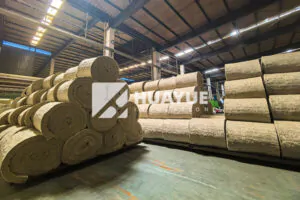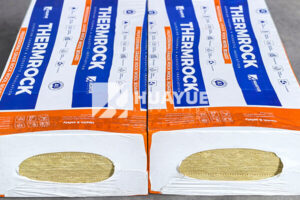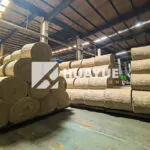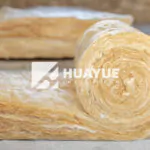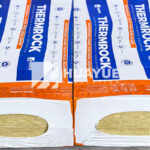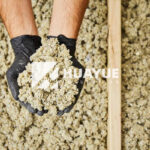Is Rock Wool Pipe Insulation the Best Choice for Industrial Applications?
When you need reliable pipe insulation, choosing the right material is tough. Bad insulation wastes energy, increases risks, and hikes your costs.
Rock wool pipe insulation is fire-resistant, maintains insulation even when wet, and resists mold, making it an effective and safe choice for most industrial piping systems.
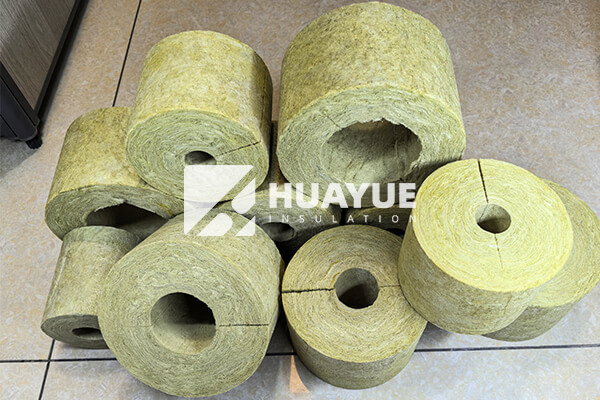
Pipes are everywhere in industrial plants. Choosing the right way to insulate them can make or break your project. The right solution saves money, cuts hazards, and keeps equipment running well. But there’s rarely a single “perfect” answer. Let’s see what makes rock wool stand out, where it sometimes falls short, and how to approach pipe insulation choices.
What is the downside of ROCK WOOL?
Rock wool solves many problems—mold, fire, and heat loss—but it’s not always perfect, especially for every use case.
The main downside of rock wool is it can absorb and hold moisture if not installed with proper vapor barriers, which might cause long-term performance issues and may increase installation complexity.
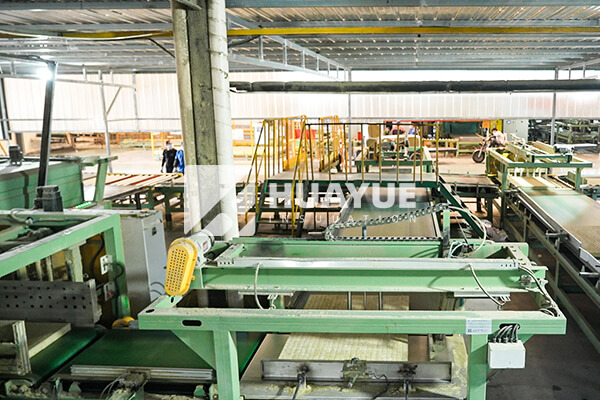
Like any material, rock wool is a mix of strong points and some practical issues. It can trap moisture if not properly protected with vapor barriers or jacketing. When that happens, insulation value drops, and you open the door to corrosion under insulation (CUI). That’s nerve-wracking for someone managing mission-critical systems, like chemical tanks or cryogenic storage. Rock wool is also heavier and sometimes harder to cut and fit compared to foam-based options. That means more work during installation and more support to hang on pipe racks. You need skilled installers who know how to handle and wrap the insulation and make sure the entire system is sealed with the right vapor and weather barriers. Costs can rise if you need extra jacketing or accessories for weatherproofing, but for most high temperatures and fire resistance needs, rock wool still outperforms many alternatives.
| Feature | Strengths | Weaknesses |
|---|---|---|
| Fire Resistance | Excellent (noncombustible) | None |
| Water Absorption | Low, unless unprotected | Risk without good vapor barrier |
| Weight | Dense, good for noise | Heavy, may be harder to install |
| Corrosion Risk | No, if dry | Yes, if moisture gets trapped |
| Cutting/Shaping | Stays firm, strong | Needs tools, more labor |
Can you put ROCK WOOL insulation around pipes?
Yes, you can use rock wool insulation on pipes, especially where fire resistance and thermal efficiency are important.
Rock wool pipe sections are made for both hot and cold pipes. They wrap tightly and resist heat loss, fire, and mold with correct installation and vapor protection.
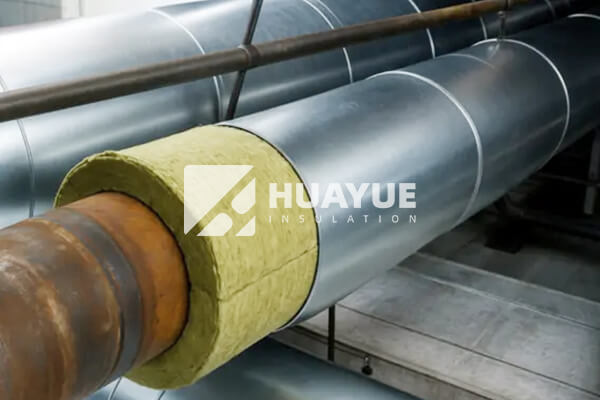
I’ve seen rock wool used on mine and my partners’ chemical plant projects, especially for steam and hot water lines. These pre-formed pipe sections split open to fit around the pipe. They’re easy to put in place and clamp shut for a snug fit over the pipe surface. Unlike fibrous glass, rock wool stands up to temperatures over 800°C, so you won’t see sagging or dripping if the process gets hot. It also provides excellent noise reduction around pumps or in noisy plant areas. Mold, mildew, and bacteria find no food here, so hygiene is simple.
Still, to avoid moisture problems, you need to wrap the completed insulation in metal jacketing, a plastic vapor barrier, or another weatherproof material—especially on cold or chilled lines. For chemical plants or where there’s risk of splashing or spills, the protective layer keeps the insulation dry, helps maintain performance, and prevents corrosion on the pipe beneath. When installed right, rock wool protects both plant safety and long-term reliability.
| Application | Installation Method | Key Reminder |
|---|---|---|
| Steam/Hot Pipes | Pre-formed pipe sections | Always seal outer jacket |
| Chilled/Cold Lines | Use vapor barrier + jacket | Prevent moisture ingress |
| Outdoor Exposed | Add metal/plastic jacketing | Shield from rain/weather |
| Process Lines | Fit carefully at valves/elbows | Inspect sealing at joints |
What is the most effective pipe insulation?
The best pipe insulation depends on temperature, environmental factors, and budget, but rock wool is often top for fire resistance, thermal performance, and long service life.
Rock wool often wins in fire-prone or high-heat sites, followed by closed-cell foam for low temperature or moisture-sensitive conditions. Your choice should balance thermal needs, risks, ease of installation, and cost.
Most new plant builds I’ve overseen have involved a comparison of options like rock wool, glass wool, foam rubber, and foam glass. Each has a “sweet spot.” For hot pipes and anywhere a fire rating matters, I pick rock wool. It’s incombustible, meets fire codes, and does not break down at high heat. For chilled water lines or in ultra-moist places, closed-cell foam and foam glass do better; they don’t absorb water, so you skip most corrosion risks, but they cost more. Glass wool is lighter and cheaper, but does not like high temperatures or water. Rubber foam is flexible, but not fire safe.
The real “most effective” insulation comes down to matching product to the needs of your facility. For instance, in a chemical plant—where CUI risk, high-temperature lines, and high stakes for safety coexist—I see rock wool most. When you need insulation that does not burn, stands up to hot lines, and keeps critters at bay, rock wool is the answer.
| Material | Temp Range | Fire Resistance | Water Resistance | Cost | Best Use |
|---|---|---|---|---|---|
| Rock Wool | -50°C to 800°C | Excellent | Good (with barrier) | $$ | Hot pipes, fire rated |
| Glass Wool | -30°C to 250°C | Good | Fair | $ | General HVAC |
| Foam Glass | -200°C to 430°C | Good | Excellent | $$$ | Cryogenic, CUI sensitive |
| Rubber Foam | -50°C to 105°C | Poor | Excellent | $$ | Cold pipes, flexibility |
Will mice chew through ROCK WOOL insulation?
No, mice rarely chew through rock wool because it is an inorganic material and unpleasant to gnaw, making it unsuitable for burrowing or nesting.
Rock wool resists rodents thanks to its mineral nature, so infestations are much less common than with organic-based insulations like fiberglass or foam.
I’ve dealt with more than one site where mice and rats made a mess of cheap, lightweight insulation in outbuildings or pipe-tunnels. They love some foams or even glass wool if there’s plastic wrapping. Rock wool is different—it’s spun from molten stone, so it contains no food or comfort for rodents. When you cut into a slab, it’s itchy and rough, and the fibers keep most pests away. That means lower lifetime replacement costs and less patching, even in older parts of the plant.
Of course, no insulation is totally immune to determined rodents, but with rock wool, pest risk drops to a minimum. This also protects your system from cascading failures caused by gaps in insulation, making plant management simpler.
| Insulation Material | Rodent Resistance | Typical Damage Seen |
|---|---|---|
| Rock Wool | High | Rare burrowing or nesting |
| Glass Wool | Low | Burrows, loss of coverage |
| Foam Rubber | Low | Gaps, holes, infestations |
| Foam Glass | High | Very rare, too hard to chew |
Conclusion
Rock wool pipe insulation combines fire safety, thermal performance, and pest resistance, and when installed properly, offers a reliable choice for demanding industrial applications.
You may also be interested in:
Ready to Get Started?
Get in touch with our experts for personalized solutions tailored to your needs.
Get Free QuoteLatest Articles
Let's Work Together
Ready to take your business to the next level? Get in touch with our team of experts and let's discuss how we can help you achieve your goals.
Get Free Solutions
